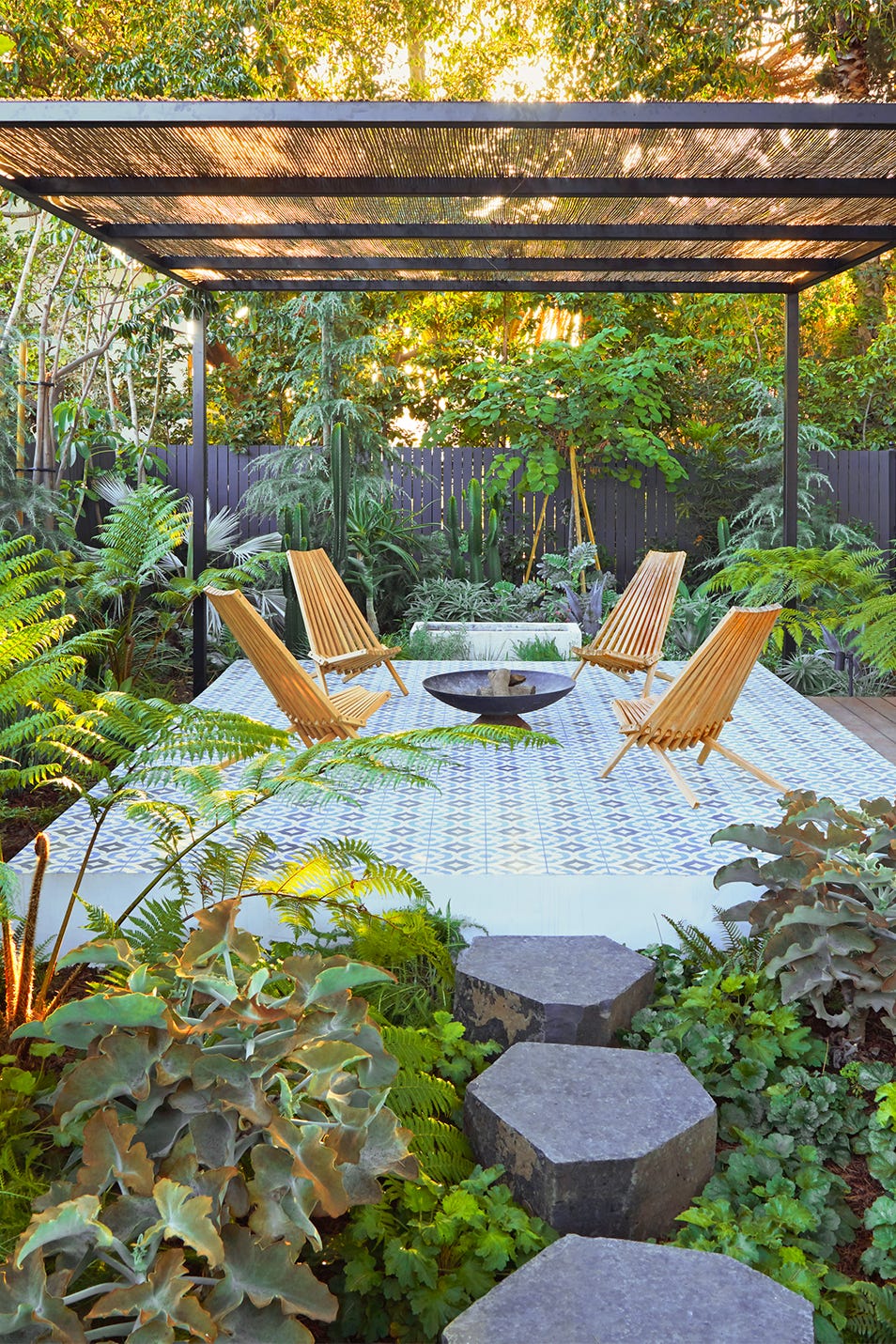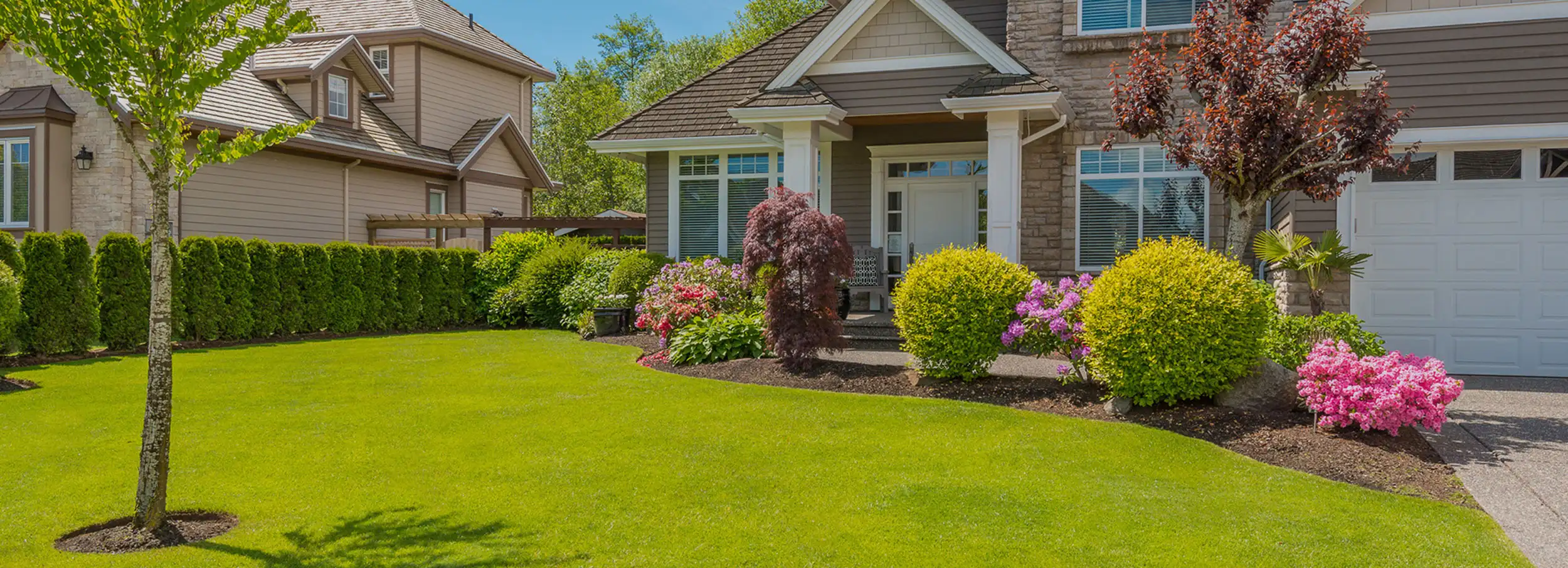Elevate Your Residential or commercial property's Aesthetic With Sustainable Landscape Design Styles and Eco-Friendly Practices

Benefits of Sustainable Landscape Design
Applying lasting landscaping practices not just conserves natural sources but likewise advertises biodiversity and boosts total environmental wellness. By choosing eco-friendly landscape design techniques, homeowner can reap a plethora of benefits that expand beyond simply visual allure. One considerable advantage is the reduction of water usage via making use of drought-resistant plants, rainfall gardens, and efficient irrigation systems. This not just decreases utility costs but likewise adds to water conservation efforts in the area.
In addition, lasting landscaping can boost soil health by lessening making use of chemical fertilizers and pesticides, therefore developing a much healthier setting for plant growth and helpful dirt organisms. This, in turn, enhances the overall strength of the landscape to withstand environmental stress factors and climate change impacts - landscaping companies Jacksonville. Additionally, sustainable landscaping methods can draw in diverse wildlife, including pollinators like butterflies and , fostering an extra vibrant and balanced ecosystem within the residential or commercial property
Incorporating Indigenous Plants
To build on the benefits of lasting landscape design, a strategic emphasis on incorporating indigenous plants can additionally improve environmental strength and advertise biodiversity within the landscape. Native plants are varieties that normally occur in a specific location and have actually developed to thrive in the local environment, soil conditions, and ecological community. By consisting of indigenous plants in landscape design designs, residential property owners can lower water use, lessen the need for chemical pesticides and fertilizers, and support the local wild animals populace.
Including indigenous plants likewise assists in protecting the one-of-a-kind personality and identification of a region's vegetation. These plants frequently need less maintenance when developed, making them a sustainable and cost-efficient landscaping remedy in the lengthy run. In addition, native plants can attract indigenous pollinators like bees and butterflies, contributing to the total wellness of the environment.
When choosing native plants for landscaping projects, it is essential to pick species that are well-suited to the specific ecological conditions of the site. Consulting with local baby rooms or arboretums can offer beneficial guidance on selecting the best indigenous plants for a particular area. By incorporating indigenous plants into landscaping designs, homeowner can produce gorgeous, lasting outside areas that profit both the area and the atmosphere.

Water Preservation Strategies
Reliable irrigation techniques play a vital duty in sustainable landscape design check here practices, making sure optimum water conservation initiatives in outdoor areas. Drip irrigation delivers water directly to the origins of plants, reducing evaporation and overflow.
Along with advanced watering approaches, xeriscaping is an additional water-saving landscaping method that focuses on using drought-resistant plants, mulch, and efficient watering to develop a low-water landscape layout - bush removal Jacksonville. By choosing indigenous plants that are fit to the neighborhood climate and dirt conditions, homeowner can minimize the requirement for excessive watering, inevitably saving water and promoting a lasting exterior atmosphere
Eco-Friendly Hardscaping Ideas
Enhancing outdoor spaces with environmentally friendly hardscaping attributes can contribute significantly to sustainable landscaping practices. Choose for products like recovered timber, recycled concrete, or natural stone to lessen environmental influence when considering hardscaping elements. These materials not only include a special aesthetic interest your outside space but additionally reduce the need for new resources extraction.
Implementing absorptive paving choices such as gravel or permeable concrete can aid lower water runoff and advertise groundwater recharge. These alternatives enable rainwater to leak right into the ground, preventing disintegration and minimizing the burden on stormwater systems.
Incorporating native plants right into hardscaping layouts can even more improve eco-friendliness by supporting regional wild animals and lowering the demand for too much watering or chemical treatments. By incorporating environment-friendly wall surfaces or upright gardens, you can introduce much more plant life into urban Check This Out setups, improving air top quality and biodiversity.
Including energy-efficient illumination, such as solar-powered LEDs, into hardscaping layouts can lower power usage and lower your residential or commercial property's carbon impact. Focusing on eco-friendly hardscaping ideas not just boosts the charm of your outdoor area but likewise shows a commitment to environmental stewardship.
Upkeep Tips for Sustainable Landscapes

Frequently trim plants to advertise healthy growth and stop overgrowth that can lead to pest diseases or infestations. Use natural fertilizers to nurture the soil and plants without blog unsafe chemicals that can seep right into the setting.
Verdict
Finally, sustainable landscaping methods use countless benefits for property owners, from boosting the aesthetic charm of the environments to advertising environmental conservation. By incorporating indigenous plants, executing water preservation strategies, and using eco-friendly hardscaping concepts, homeowner can create attractive landscapes that are also environmentally liable. With correct maintenance, lasting landscapes can grow and add to a much healthier ecosystem for both human beings and wild animals.
Moreover, lasting landscape design can enhance dirt health by lessening the use of chemical fertilizers and pesticides, consequently creating a healthier environment for plant development and valuable dirt organisms.To build upon the benefits of sustainable landscape design, a tactical emphasis on incorporating indigenous plants can additionally improve environmental durability and advertise biodiversity within the landscape. By consisting of native plants in landscaping styles, residential property proprietors can lower water usage, decrease the demand for chemical pesticides and plant foods, and support the regional wildlife population.
These plants frequently need less maintenance as soon as established, making them a sustainable and cost-efficient landscape design solution in the lengthy run. By incorporating native plants into landscaping layouts, residential property owners can create beautiful, sustainable outside rooms that benefit both the area and the environment.